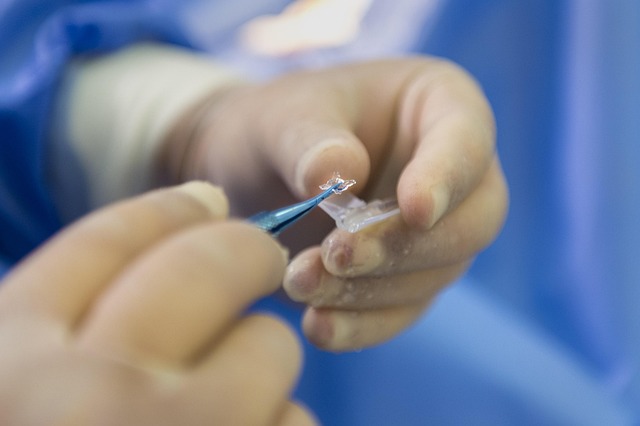In a major medical milestone, a 30-year-old man struggling with bladder neck obstruction (BNO) also called as bladder outlet obstruction (BOO) found relief through a revolutionary, minimally invasive procedure performed at KIMS Hospitals Thane. The patient had been experiencing troubling urinary symptoms, but was successfully treated by Dr. Aakil Khan, Urologist at KIMS Hospitals Thane, using the iTind procedure – a next-generation solution that opens the blocked passage without the need for major surgery, a catheter, or an overnight hospital stay.
What is iTind Procedure? How It is Done?
The iTind procedure is a scare free minimally invasive procedure done under sedation. It has a lot of advantages over traditional treatments as it preserves sexual function, causes minimal discomfort, and allows same-day discharge.
During the procedure, a slender, three-strut nitinol device is inserted through the urethra into the prostatic urethra and bladder neck. Under direct vision with a cystoscope, the device is carefully positioned in the precise area of obstruction. Once deployed, it expands gently, applying controlled radial pressure to the surrounding prostatic and bladder neck tissue. Over the course of 5–7 days, this pressure gradually reshapes and remodels the obstructing tissue without cutting, heating, or ablating it.
This reshaping creates longitudinal channels within the prostate and bladder neck, improving urine flow while preserving ejaculation making it an ideal solution for younger individuals.
After the reshaping is complete, the device is removed in a short follow-up visit, leaving behind a more open urinary passage. This minimally invasive approach eliminates the need for incisions or prolonged catheter use, significantly reducing the risk of bleeding, infection, or erectile dysfunction often associated with conventional surgeries.
The removal is typically performed under light sedation or local anesthesia and takes only a few minutes. The patient is able to void spontaneously after device removal, usually with immediate symptom improvement.
KIMS Hospitals Thane Dr. Aakil Khan Performs rare iTind Procedure
This specific case involved a 30-year-old male from Mumbra, who had a structurally high bladder neck.
Now, this is a condition more commonly seen in older individuals (due to prostate enlargement), and only 5–10% of younger patients might have high bladder neck.
However, if younger individuals suffer from high bladder neck, the congenital anatomical variant can lead to bladder neck obstruction, causing difficulty in urination.
So, how was the treatment done?
Initially, the patient was treated with alpha-blockers, which failed to provide relief. A surgical incision of the bladder neck (done endoscopically) was considered but avoided due to the risk of retrograde ejaculation, a common side effect of traditional procedures like TURP (transurethral resection of the prostate). The iTind implant offered a safe, non-invasive alternative that resolved the obstruction while preserving sexual function.
iTind Procedure in KIMS Hospital Thane by Urologist Dr Aakil Khan is Only Second or Third in Maharashtra
“This is the first iTind procedure conducted in Mumbai and only the second or third in Maharashtra,” said Dr. Aakil Khan.
“Across India, only around 30 cases have been done so far, mainly in Delhi and Pune. The technique is a breakthrough, especially for younger patients who seek relief without compromising quality of life,” he added.
How Did the Patient Feel after the iTind Procedure?
The patient, who was discharged the same day, was symptom-free and grateful.
“I was nervous about surgery, especially with risks to daily life and personal health. But this treatment felt effortless. I was back on my feet the same day with no pain and no complications,” he shared.
iTind is part of a group of emerging Minimally Invasive Surgical Therapies (MIST), alongside options like UroLift, aimed at managing urinary obstruction with minimal disruption to lifestyle.
This case highlights how advanced, patient-friendly technologies like iTind are reshaping urological care, offering faster recovery, fewer complications, and better quality of life for patients of all ages.
FAQs on iTind Procedure You Need to Know Now for Bladder Neck Obstruction
1. What is the iTind procedure?
The iTind procedure is a scar-free, minimally invasive treatment for relieving bladder neck obstruction. It involves temporarily placing a small, self-expanding device (iTind) into the urinary tract to reshape the tissue without cutting, heating, or removing any part of the prostate or bladder neck.
2. Who is the iTind procedure suitable for?
It is ideal for men with bladder outlet obstruction, including younger individuals with a congenitally high bladder neck, and older men with benign prostatic hyperplasia (BPH). It’s especially beneficial for those who wish to preserve sexual function and avoid invasive surgery.
3. How does the iTind device work?
The iTind device gently expands over 5–7 days, applying controlled pressure to the prostate and bladder neck tissues. This pressure reshapes the obstructed area, creating open channels that improve urine flow. The device is then removed in a short follow-up visit.
4. Is the iTind procedure painful?
No. The procedure is done under sedation or local anesthesia and is well-tolerated with minimal discomfort. Most patients report little to no pain during insertion or removal.
5. How long does the iTind procedure take?
The initial procedure typically takes about 15–30 minutes. Device removal is performed after 5–7 days and takes only a few minutes under light sedation or local anesthesia.
6. Does the iTind procedure require hospitalization?
No. It is a daycare procedure. Most patients are discharged the same day without the need for an overnight stay or catheter.
7. Are there any side effects or risks with iTind?
iTind is associated with fewer risks than traditional surgeries. There is no cutting, heating, or tissue removal, reducing chances of bleeding, infection, or sexual dysfunction. Mild urinary discomfort or urgency may occur temporarily.
8. Will my sexual function be affected?
No. A key advantage of iTind is that it preserves ejaculation and sexual function, unlike traditional procedures like TURP, which may cause retrograde ejaculation.
9. When will I see results after the iTind procedure?
Many patients experience immediate symptom relief after device removal, including improved urinary flow and reduced frequency or urgency.
10. What makes iTind different from other treatments like TURP or UroLift?
- iTind: Non-surgical, temporary implant, no cutting or heating, preserves sexual function.
- TURP: Surgical removal of prostate tissue, may cause retrograde ejaculation and other complications.
- UroLift: Uses permanent implants to lift and hold tissue; may not suit all anatomical conditions.
11. Is iTind approved and available in India?
Yes. While relatively new, iTind has been performed in around 30 cases in India, with this procedure at KIMS Hospitals, Thane being the first in Mumbai. It is FDA-approved internationally and increasingly available at select centers in India.
12. How do I know if iTind is right for me?
You should consult a urologist. iTind may be recommended if you:
- Have bladder neck obstruction or BPH
- Are young and want to avoid surgery
- Failed medical therapy (like alpha-blockers)
- Want to preserve sexual and urinary function
13. Will I need a catheter during or after the procedure?
No. Catheterization is usually not needed, either during insertion or after device removal.
14. What is the device made of?
The iTind device is made of nitinol, a medical-grade, flexible alloy known for its shape memory and biocompatibility.
15. Where can I get the iTind procedure done in India?
Currently, iTind is available in select hospitals in cities like Delhi, Pune, and now Mumbai, including KIMS Hospitals, Thane, where one of Maharashtra’s earliest cases was successfully performed.
Also Read: From Diagnosis to Cure: How AI-Driven Drug Discovery Is Speeding Up Treatment Development





